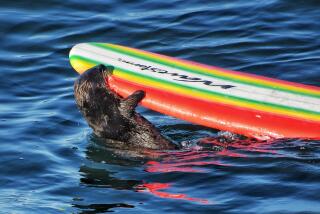Want to see wildlife? Rule No. 1: Arm yourself -- with information
- Share via
If you’re an eco-tourist (or even just a thoughtful one), you want to see the animals; you don’t want to harm them. Can you do one without the other?
Yes, but some operators do a better job than others at protecting their wildlife. Still, how do you know?
For answers, I turned to Elizabeth Hogan, the oceans and wildlife campaigns manager for the World Society for the Protection of Animals, a nonprofit animal welfare organization founded in 1981 in Britain.
The tips were developed as part of WSPA’s campaign to stop turtle farming, so Hogan’s examples focus on sea turtles, but they can be broadened to include almost any animal.
--Avoid direct contact with wild animals. “Sea turtles are natural carriers of E. coli and salmonella,” says Hogan. “It doesn’t make sense to touch them, especially for young children.”
--If the program has a greater focus on entertainment than on science, think twice. Hogan recommends snorkeling or diving with sea turtles in the wild rather than in a captive environment.
--Consult trusted third parties for information. Hogan recommends the International Eco Tourism Society, among others.
--Ask your travel agent, cruise line and hotel concierge the tough questions. Ask for proof that the property operates with a focus on the welfare of the animals and the environment.
Where can travelers go to benefit sea turtles?
Hogan recommends visiting Jekyll Island off Georgia or finding activities through the Sea Turtle Conservancy, founded in 1959.
More to Read
Sign up for The Wild
We’ll help you find the best places to hike, bike and run, as well as the perfect silent spots for meditation and yoga.
You may occasionally receive promotional content from the Los Angeles Times.






